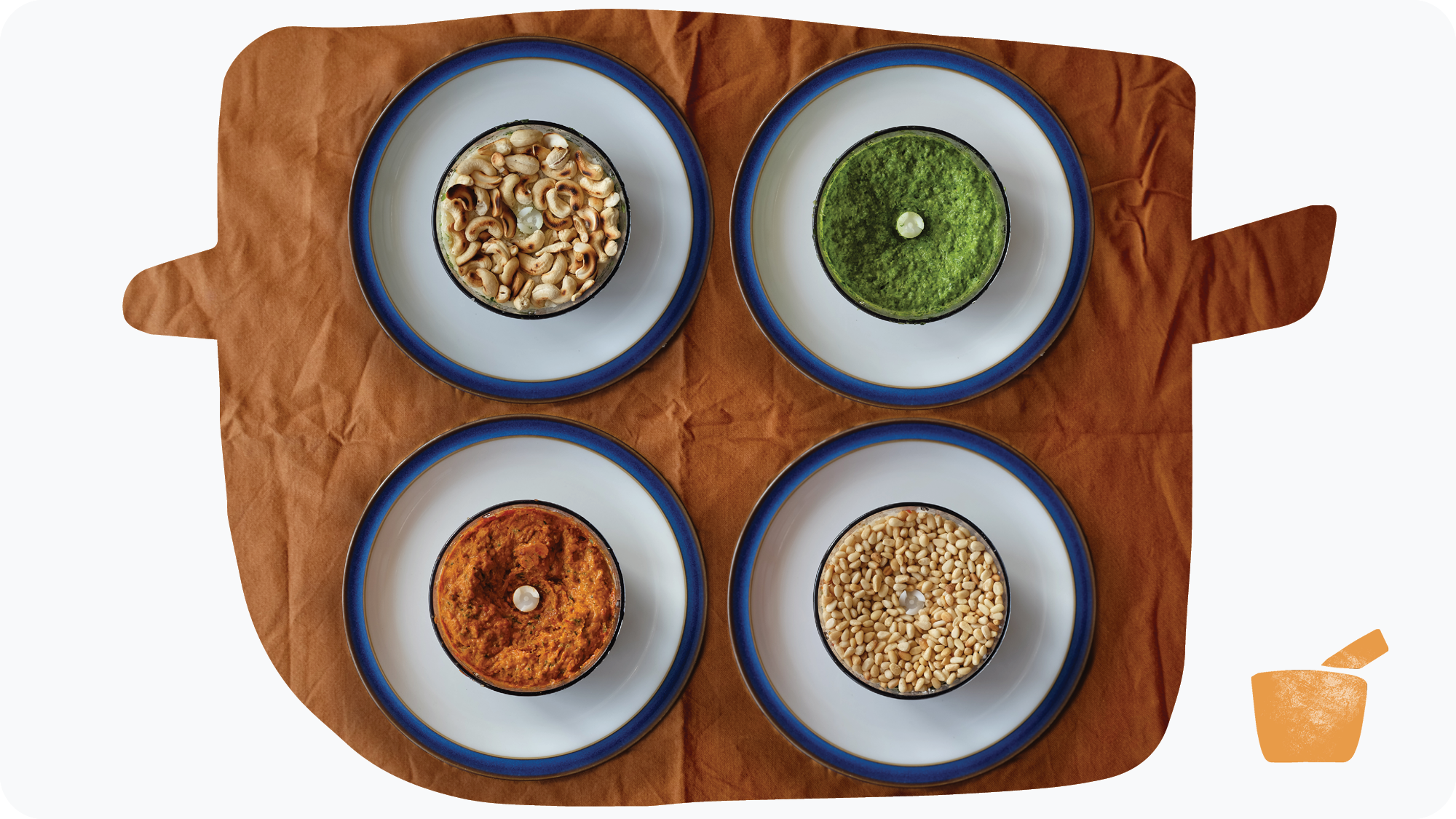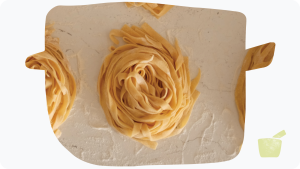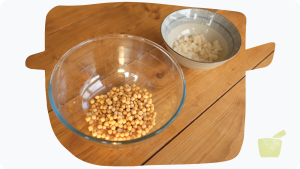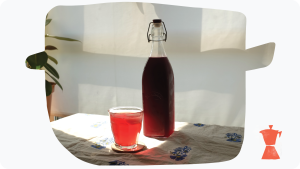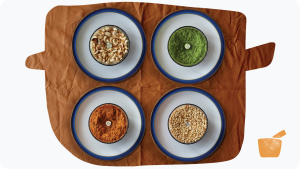A guide to the basic building blocks of pesto and how to experiment with them, along with my personal favourite green and red pesto recipes.
Like many people, supermarket pesto saw me through much of my student years. I’d simply boil some pasta, stir in a couple of spoonfuls of green paste et voila! Dinner ready to go, and a healthy one at that (has to be, it’s green). You could even add some vegetables with the pasta before stirring through the pesto and it was basically haute cuisine.
Back in those days, Aldi sold jars of red pesto that tasted so good a friend of mine used to eat it out of the jar with a spoon – although this could possibly have been more to do with laziness. Either way, pesto was perfect for convenience cooking throughout my twenties: a rich salty paste helpful to have on hand for when I didn’t have the time or inclination to cook anything else.
But even with the prodigious amounts of pesto I had consumed over the years, it wasn’t until fairly recently that I actually started to wonder what was in it. What were the flavours in pesto that I liked, and would they be easy to create at home? Could I possibly even surpass the culinary delights contained in a £2 jar from the supermarket?
Pesto: basic building blocks
For those of you who, like me until very recently, have never thought of pesto as anything other than a pre-made sauce in a jar, a quick history lesson. Traditional pesto is made using a mortar and pestle combining garlic, salt, basil, pine nuts, olive oil and hard cheese (normally parmesan). Originating in the Italian city of Genoa, the word “pesto” itself reflects the sauce’s origins: deriving from the Genoese verb “pestare” meaning “to crush.”
The first thing you will notice when trying to make traditional pesto is the cost of pine nuts. Pine nuts cost too much; it’s one of the certainties of life (along with death and taxes). The good news is that there is no requirement to make traditional pesto, and you can actually use a wide range of other equally delicious (and, more importantly, cheaper) nuts when making pesto at home. And this isn’t the only part of the recipe you can play around with either.
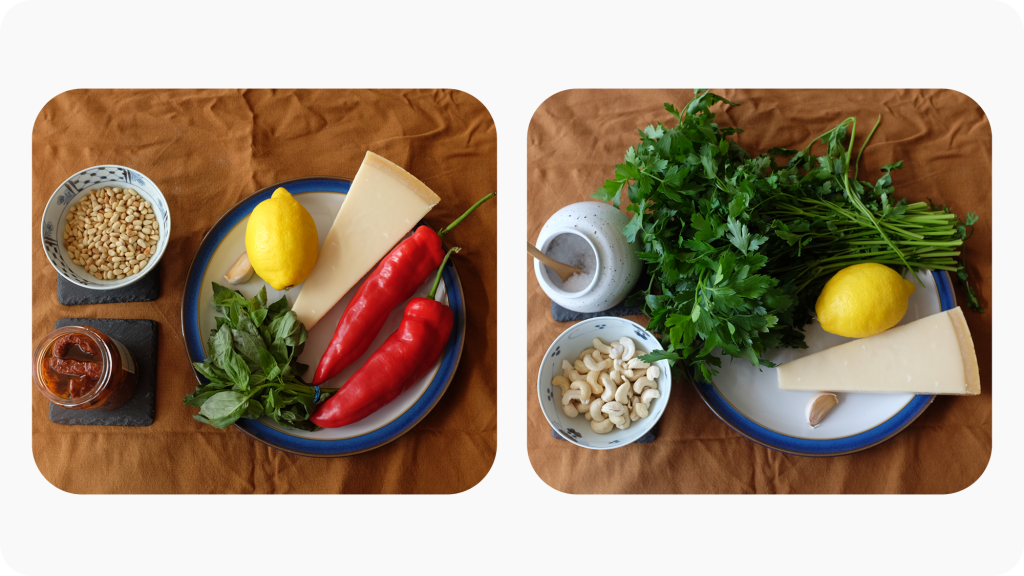
The best way to think about making pesto is there are certain building blocks you need, but these allow for a wide range of combinations and substitutions. In general to make pesto (or at least the pestos I most like) what you need is:
- Some nuts
- A green herb
- Olive oil
- Hard cheese (or nutritional yeast for vegan pesto)
- Garlic
- Salt
- Lemon
- (For red pesto) Sun-dried tomatoes
Making pesto at home gives you access to a range of flavours, and can also be a way of using up herbs that are on the verge of going off. Also don’t worry about not having a big enough pestle and mortar – a food processor will do just fine, it’s what I use.
Green and red pesto recipes
In my fridge I always like to have two kilner jars of pesto on the go – one green and one red. Stored properly in sealed jars I find that homemade pesto lasts up to a couple of weeks in the fridge (just keep an eye out just in case any mould starts to grow). Having these two flavours to hand makes it super easy to rustle up a quick pasta dish or delicious sandwich – for which I’d also recommend making some sourdough bread if you have the time.
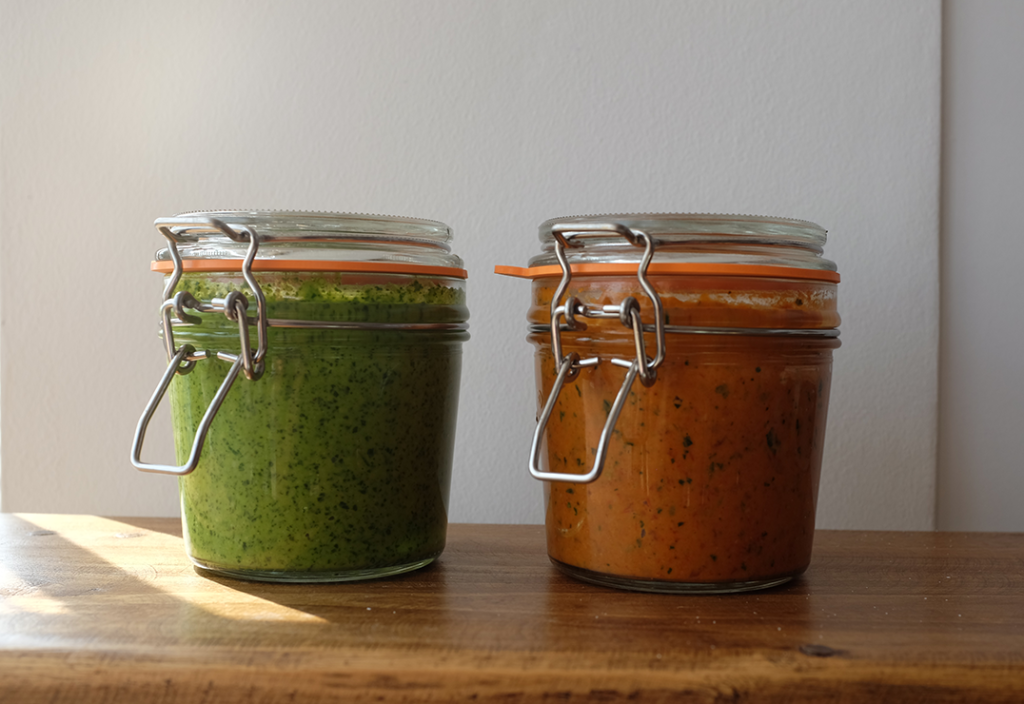
When it comes to making pesto, the method is always the same: combine everything in a food processor, blend until smooth, then taste and adjust. The main consideration before you begin is the size of your food processor – both the recipes listed below make enough pesto to fill a 0.35L kilner jar, so if you’re using an attachment for a stick blender (as I often do), just make sure not to overfill it as this can make quite a substantial mess.
How to make green pesto
With green pesto you’re looking to create a thick sauce mainly composed of toasted nuts, green herbs, cheese and olive oil. The nuts and herbs you choose (or have to hand) can vary wildly. My favourite recipe is as follows using cashew nuts and parsley:
Ingredients
- 50g toasted cashew nuts
- 100g parsley
- 60g parmesan cheese
- 130ml olive oil
- 1 teaspoon of salt (ideally sea salt flakes)
- Zest and juice of ½ lemon
- 1 medium-sized clove of garlic
Equipment
- Food processor
- Frying pan
- Kilner jar (for storage)
Method
- Toast the cashew nuts by heating them in a dry frying pan until they turn golden, then leave to cool
- Blitz all the ingredients together in a food processor, leaving the lemon zest to last and adding gradually to match your taste
- Store in a sterilised kilner jar
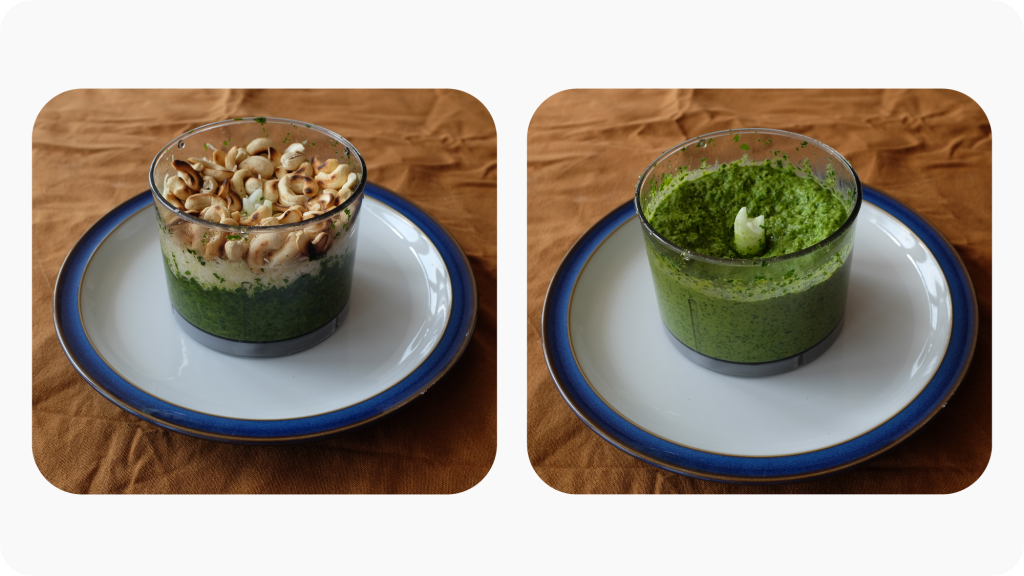
When blended I find this pesto has a subtle flavour, with the saltiness of the parmesan and citrus tang of the lemon balancing against the slight sweetness of the cashews and freshness of the parsley (if you taste it and it’s too lemony, I recommend a bit more salt and about ¼ teaspoon of sugar). I often have this with pasta – either on its own or combined with roast some vegetables and red onion – or in sandwiches with either roast chicken or tomato and mozzarella. It’s perfect for a light lunch.
How to make red pesto
Red pesto (or pesto rosso) is a Sicilian cousin of the original Genoese recipe, with its rich colour and flavour coming from the addition of sun-dried tomatoes. In my favourite red pesto recipe I also add roasted red peppers – the sweetness of the peppers contrasts with the salty sun-dried tomatoes and brings out the underlying flavours from the herbs, nuts, cheese and oil:
Ingredients
- 2 long red peppers
- 1 jar of sun dried tomatoes (with the oil from the jar)
- 30ml olive oil
- 40g toasted pine nuts
- 25g parmesan cheese (grated)
- 20g basil
- 1 teaspoon salt (ideally sea salt flakes)
- Juice of ½ a lemon
- 1 medium-sized clove of garlic
Equipment
- Food processor
- Frying pan
- Small baking tray
- Kilner jar (for storage)
Method
- Pre-heat an oven to 180°C. Cut the tops off two long red peppers and slice them in half lengthways, removing the seeds and pith. Put them in a small baking tray with some olive oil and a generous pinch of salt and roast for 15 minutes, then leave to cool
- While the peppers are roasting, toast the pine nuts by heating them in a frying pan until they turn golden, then leave to cool
- Once the peppers and nuts are cool, pour a jar of sun-dried tomatoes (including the oil) into a food processor, then add the red peppers (along with the oil they were roasted in) and blitz until smooth
- Add all the other ingredients, adding extra parmesan cheese gradually until the pesto suits your taste
- Store in a sterilised kilner jar
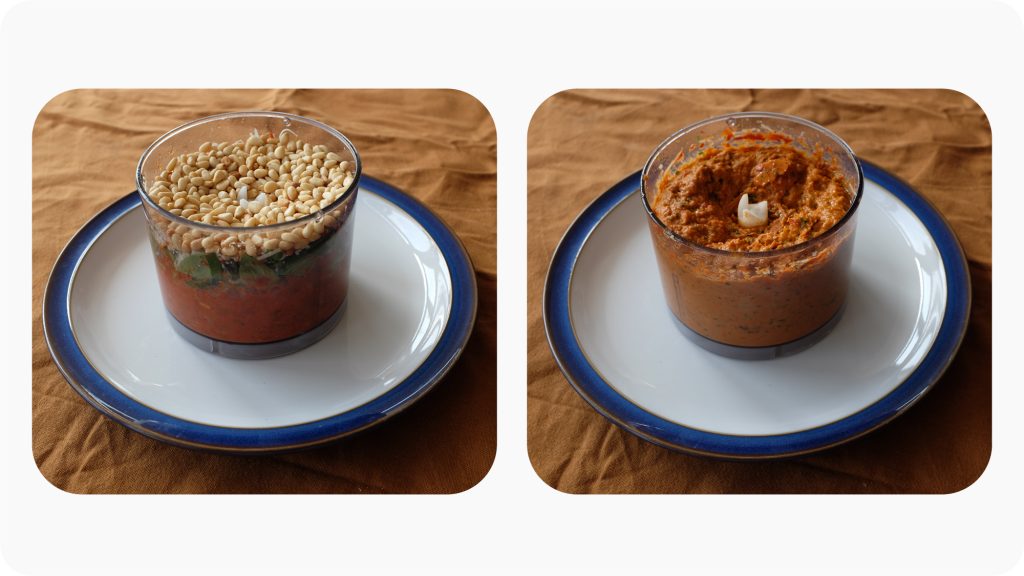
Make sure to use the sun-dried tomato oil and the roasting oil from the red peppers in addition to the extra virgin olive oil. This not only helps you save money on (ludicrously expensive) olive oil, but also adds more depth to the pesto because these oils will be infused with the tomatoes and peppers.
Because of the strength of flavour you get from sun-dried tomatoes and red peppers, red pesto is much richer and ‘louder’ than its green relative. For this reason I find it works really well with meat dishes; I can greatly recommend chopping a few sausages into meatball-sized chunks, frying them in some oil and sage, and then mixing this red pesto in. It’s also great as a snack spread on bread and topped with a few black olives.
Happy experimenting!
These are just two of my favourite pesto recipes, but the great thing about making your own pesto at home is that you can experiment to create any flavours more to your taste. My mum likes to make a green pesto out of walnuts and wild garlic leaves, if you like something with a bit of savoury bitterness then you can use rocket as the main herb in your pesto, or create a really distinct flavour using pistachios as a base ingredient.
Whatever you’re trying out when making a new pesto, my recommendation would be to have a bit of extra olive oil, cheese and lemon juice as these are really useful for balancing out the flavour and texture at the end of the process if it doesn’t taste/look quite right. Enjoy!
